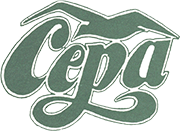Articles
Articles of Interest from Newsletters and Other Sources
Loch Haven Beach Restoration – 2021 Fall
AA County Plan2040 (General Development Plan) – 2021 Spring
Draft Of Aa County’s General Development Plan Is Available For Comment – 2020 Fall
Public Access And The Future Of Bay Restoration – 2020 Spring
Upgrading Septic Systems In Aa County – 2019-20 Winter
Alliance For Livable Communities #3 – 2019 Fall
Water Resources And The Aa County 2009 GDP – 2018-19 Winter
Questions For Candidates #2 – 2018 Fall
Questions For Candidates #1 – 2018 Spring
Alliance For Livable Communities #2 – 2017 Fall
Alliance For Livable Communities Update #1 – 2017 Spring
The Antarctic And Sea Level Rise – 2017 Fall
Antarctic Sea Ice Variability – 2017 Fall
Recharging Aquifers With Potable Water – 2017-18 Winter
Ground Water For Southern Maryland And The Eastern Shore – 2017 Spring
Will Anne Arundel County Run Dry Of Water? – 2016-17 Winter
Aquifer Recharge – A Brief Introduction – 2015 Fall
Ammonia as a Fuel – Winter 2022
Lithium – 2020 Fall
Methane – Recent Developments – 2020 Spring
Future Of Coal – 2017 Spring
New Developments In Biofuels – 2015-16 Winter
Energy Storage – 2016 Fall
Climate Change and Refugees – 5/8/2023
Net Zero Emissions – Spring 2022
Carbon Capture and Sequester (CCS) – Spring 2022
The Value of Green Infrastructure Must be Protected – Winter 2022
Assisted Migration – 2021 Spring
Biden’s Reversal Of Trump’s Environmental Actions – 2021 Spring
Should We Preserve Half The Earth For Wildlife? – 2020-21 Winter
Polyfluoroalkyl Substances (PFAS) Or “Forever Chemicals” – 2020-21 Winter
Enhanced Nutrient Removal (ENR) In AAC – 2019 Fall
Beach Erosion And Preservation – 2019 Spring
Green New Deal And Reality – 2019 Spring
Our Wildlife Is Disappearing – 2018-19 Winter
Coal Ash Its And Ponds – 2018 Fall
Carbon Tax – 2018 Spring
Nutrient Trading In Maryland – 2017-18
All About Chicken Manure – 2015-16 Winter
Will These Environmental Regulations Survive? – 2016-17 Winter
Fall 2016 CEPA Forum – Next Steps – 2016-17 Winter
Drugs In The Environment – 2016 Spring
Residential Gray Water Systems – 2015 Fall
Phragmites – Invasion Of The Common Weed – 2015 Fall
Ammonia – Another Bay Pollutant – 2021 Fall
Acidification Of The Ocean And The Bay – 2019-20 Winter
Are Fish From The Chesapeake Bay Safe To Eat? – 2017 Spring
Plastics In The Oceans – 2016 Spring
Effect Of Plastics On Marine Wildlife – 2016 Fall
President’s Message – 2022 Spring
President/Trustee Message – 2022 Winter
President’s Message – 2021 Fall
Trustee’s Message – 2021 Spring
President’s Message – 2020-21 Winter
Trustee’s Message – 2020 Fall
President’s Message – 2020 Spring
President’s Message – 2019-20 Winter
President’s Message (Forests Provide Untold Resources) – 2019 Fall
President’s Message (Thoughts On Conference On Climate Change On The Patuxent River Watershed) – 2019 Spring
President’s Message (CEPA’s Interest In The Decline Of The Aquifers In Aa County) – 2018-19 Winter
President’s Message (The Conundrums Of Growth) – 2018 Fall
President’s Message (Phosphorus – Why Are We Wasting A Critical Life-giving Resource?) – 2018 Spring
President’s Message (Solar Arrays In AA County) – 2017-18 Winter
President’s Message (Climate Change And The Chesapeake Bay) – 2017 Fall
President’s Message (Have We Reached The Carrying Capacity Of Our Environment?) – 2017 Spring
President’s Message (Accomplishments Of The Past Year) – 2016-17 Winter
President’s Message (Comments On “The Unsustainable Spiral Of Growth”) – 2016 Fall
President’s Message (The Future Of Drinking Water) – 2016 Spring
President’s Message (CEPA’s Core Interests) – 2015-16 Winter
President’s Message (CEPA’s Annual Plan For 2016) – 2015 Fall
Mission
CEPA’s mission is to raise public awareness, educate, and encourage activism to protect the Chesapeake Bay.
Who We Are
CEPA is an environmental organization of private citizens working to influence environmental policies that affect the Chesapeake Bay.
Join Us
Join CEPA and support the Bay.
